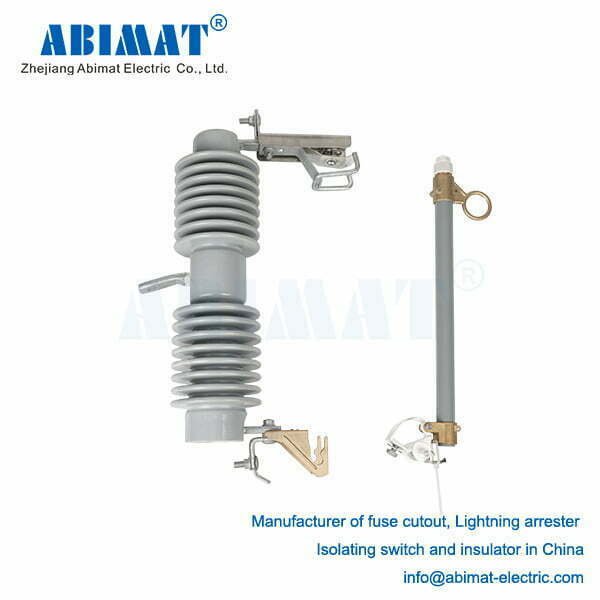The Distribution Cutout: A Critical Guardian of Power System Integrity
Within overhead electrical distribution networks, the distribution cutout serves as a fundamental and indispensable protective device. Often appearing as a simple component mounted on utility poles, its role in safeguarding infrastructure, ensuring reliability, and enabling safe operations is paramount. This fused switch acts as the frontline defense against damaging overcurrents, primarily caused by faults.

Anatomy and Function
A standard distribution cutout comprises several key elements:
I.Mounting Bracket: Secures the assembly to the pole or crossarm.
II.Insulator: Provides electrical isolation between live components and the grounded support structure, typically made of polymer or porcelain.
III.Fuse Holder (Fuse Tube): The hinged component housing the replaceable fuse link. Its design often causes it to drop open visibly upon fuse operation.
IV.Fuse Link: The sacrificial element calibrated to melt (“blow”) under specific overcurrent conditions, interrupting the circuit.
V.Contacts: Provide electrical connection points for the incoming line conductor and the outgoing conductor feeding downstream sections or transformers.
Core Protective Functions
I.Overcurrent and Fault Interruption: This is the primary function. Downstream faults—caused by lightning, equipment failure, animal contact, or falling branches—result in excessive current. The precisely sized fuse link melts under this abnormal current, creating an open circuit. This isolates the faulted section upstream of the cutout, preventing damage propagation towards the substation and protecting upstream equipment like transformers and lines.
II.Isolation/Sectionalizing: Cutouts act as strategic sectionalizing points. A blown fuse physically and visibly isolates the faulted downstream section (e.g., a lateral feeder or customer tap). This enables utilities to quickly locate the fault (based on the open cutout) and restore power to unaffected upstream areas while downstream repairs proceed. The visibly open fuse holder provides a clear indicator for line crews.
III.Transformer Protection: Cutouts are almost universally installed on the primary side of distribution transformers. They protect the transformer from damaging internal faults and severe secondary-side overloads.
Operation and Key Features
Fusing: Cutouts use expulsion-type fuse links. When the link melts, an arc forms within the fuse tube. The tube liner (often fiberglass) generates de-ionizing gases under the arc’s heat, rapidly extinguishing it and safely clearing the fault.
Visible Open Indication: Most cutout designs cause the fuse holder to drop open or swing down by gravity after fuse melting and interruption complete. This provides a highly visible, unambiguous ground-level indication of operation and an open circuit.
Manual Switching: Cutouts also serve as manual disconnect switches. Line crews can safely open the fuse holder using an insulated “hot stick” to de-energize a downstream section for maintenance, providing visible air gap isolation.
Evolution and Variations
While traditional fused cutouts dominate, variations exist:
Solid Material Fuse Links: Offer improved durability and environmental resistance over older tin or lead alloy links.
Electronic Cutouts (EFC – Electronic Fused Cutout): Integrate sensors and communication modules. They provide remote fault indication, precise fault current measurements, and potentially automated reclosing, enhancing grid intelligence and restoration speed.
Recloser-Cutout Combinations: Used where more sophisticated protection coordination is needed on lateral taps.
Conclusion
The ABIMAT distribution cutout, though mechanically straightforward, is a cornerstone of safe, reliable, and manageable overhead power distribution. Its ability to automatically detect and isolate faults, provide vital visual indication, and serve as a manual isolation point makes it an essential component. By preventing fault currents from causing widespread damage and enabling rapid sectionalizing, these devices minimize outage duration and extent, underpinning the resilience of the electrical grid. Continuous refinement in fuse technology and electronic integration ensures this critical device remains effective in modern power systems.


